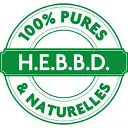Bergamot essential oil
Botanical Name: Citrus Aurantium ssp. bergamia
Distilled part: Zest
Botanical family: Rutaceae
Origin: Italy
Chemical composition:
- Aromatic alcohols
- Aldehydes: Citral
- Coumarins: Furocoumarins
- Esters: Linalyl acetate (29%)
- Furocoumarins
- Monoterpenes: Alpha Pinene, Camphene, Limonene
- Monoterpenols: Alpha Terpineol, Geraniol, Linalool, Nérol
- Monoterpenes
Danger: Photosensitizer*** (to combat unpleasant photosensitization: Tanacetum annuum) - Risk of allergies
- Very good as an electric diffuser
Legend: * powerful,** very powerful;*** extremely powerful (power value for the associated pathology)
PHYSICAL PROPERTIES AND THERAPEUTIC INDICATIONS:
Aerocolia*
Anti-infectious
Antiseptic*
Antispasmodic
Bactericidal (meningococcus, staphylococcus, streptococci)
Spasmodic colitis*
Dermatosis*
Hemorrhoids
Insomnia*
Ortho and parasympathetic neuroregulator
Neuritis**
Malaria (Malaria)
Wound
Pruritus
Sciatica**
Sedative**
Digestive stimulant
General stimulant (low dose)
PROPRIETES EMOTIONNELLES, PSYCHIQUES ET INDICATIONS THERAPEUTIQUES:
Anxiolytic*
Nervous soothing*
Calming*
Irritability
Mood swings
Stress*
Hustle
Self-confidence (lack)
Concentration (disorder)
Depression
Psychic imbalance
Exhaustion
Reference and bibliographic source: Lily BAYER and Dr Hervé STAUB, (2013) “In-depth treatise on Phyto and Aromatherapy”, Ed. Grancher. p. 453.
INDICATIONS IN AROMATHERAPY AND THE USE OF ESSENTIAL OILS DO NOT CONSTITUTE A MEDICAL DIAGNOSIS AND DO NOT REPLACE THE ADVICE OF A DOCTOR OR MEDICAL TREATMENT!





